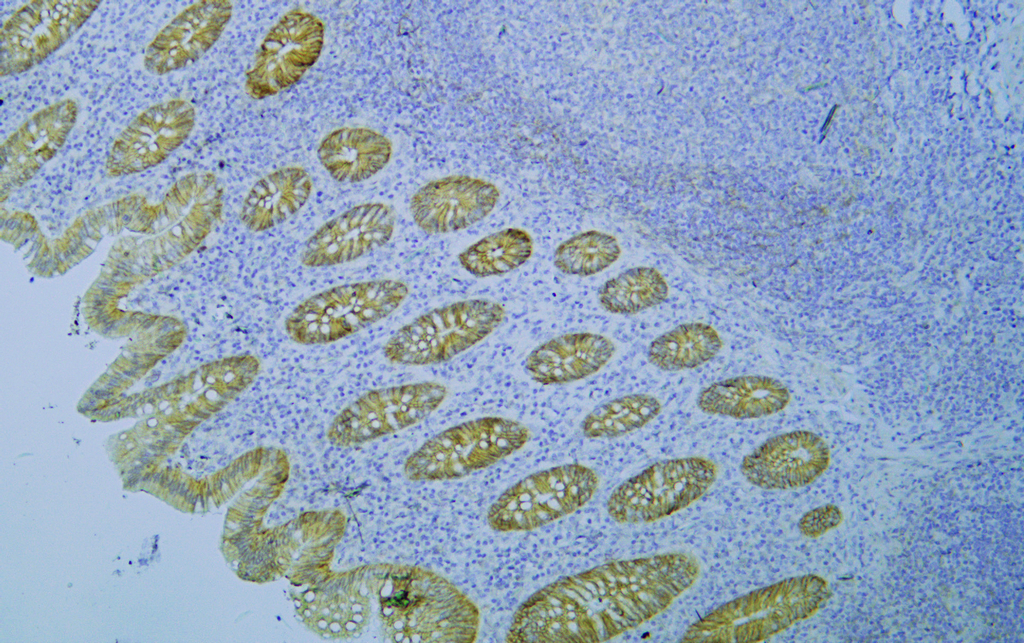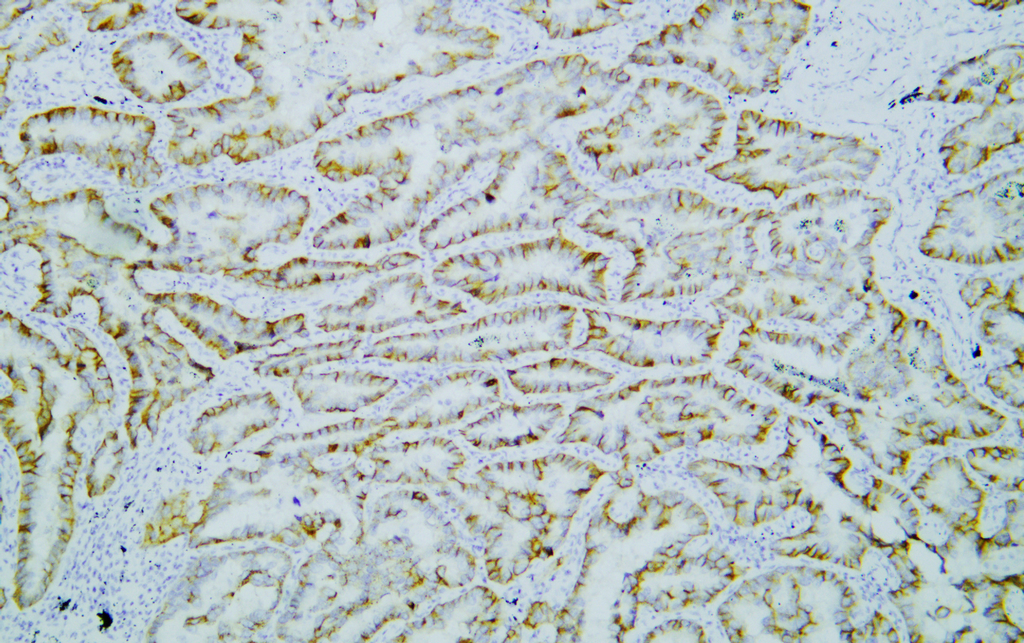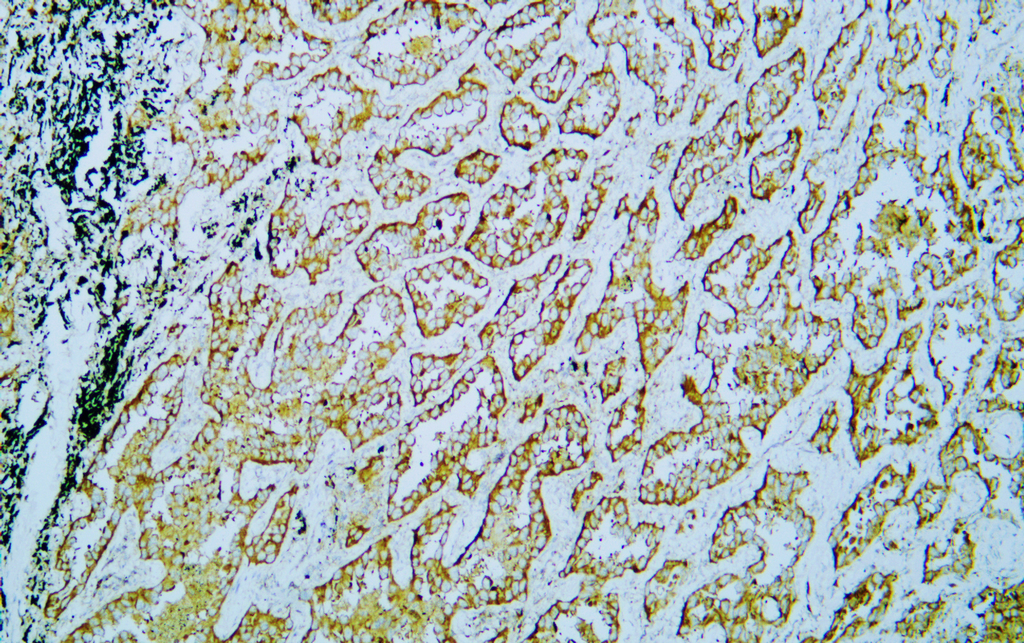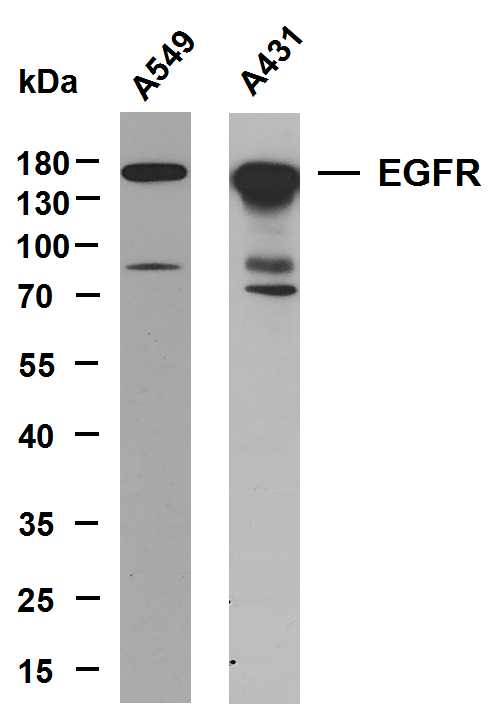EGFR (PTR2121) mouse mAb
- Catalog No.:YM4442
- Applications:IHC;WB;IF;ELISA
- Reactivity:Human;
- Target:
- EGFR
- Fields:
- >>EGFR tyrosine kinase inhibitor resistance;>>Endocrine resistance;>>MAPK signaling pathway;>>ErbB signaling pathway;>>Ras signaling pathway;>>Rap1 signaling pathway;>>Calcium signaling pathway;>>HIF-1 signaling pathway;>>FoxO signaling pathway;>>Phospholipase D signaling pathway;>>Endocytosis;>>PI3K-Akt signaling pathway;>>Focal adhesion;>>Adherens junction;>>Gap junction;>>JAK-STAT signaling pathway;>>Regulation of actin cytoskeleton;>>GnRH signaling pathway;>>Estrogen signaling pathway;>>Oxytocin signaling pathway;>>Relaxin signaling pathway;>>Parathyroid hormone synthesis, secretion and action;>>Cushing syndrome;>>Epithelial cell signaling in Helicobacter pylori infection;>>Shigellosis;>>Hepatitis C;>>Human cytomegalovirus infection;>>Human papillomavirus infection;>>Coronavirus disease - COVID-19;>>Pathways in cancer;>>Proteoglycans in cancer;>>MicroRNAs in cancer;>>Chemical carcinogenesis - receptor activation;>>Chemical carcinogenesis - reactive oxygen species;>>Colorectal cance
- Gene Name:
- EGFR
- Protein Name:
- Epidermal growth factor receptor
- Human Gene Id:
- 1956
- Human Swiss Prot No:
- P00533
- Mouse Gene Id:
- 13649
- Mouse Swiss Prot No:
- Q01279
- Immunogen:
- Synthetic Peptide of EGFR AA range: 300-400
- Specificity:
- This antibody detects endogenous levels of EGFR protein.
- Formulation:
- PBS, 50% glycerol, 0.05% Proclin 300, 0.05%BSA
- Source:
- Mouse, Monoclonal/IgG2a, kappa
- Dilution:
- IHC 1:200-1000. WB 1:500-2000. IF 1:100-500. ELISA 1:1000-5000
- Purification:
- Protein G
- Storage Stability:
- -15°C to -25°C/1 year(Do not lower than -25°C)
- Other Name:
- EGFR;ERBB;ERBB1;HER1;Epidermal growth factor receptor;Proto-oncogene c-ErbB-1;Receptor tyrosine-protein kinase erbB-1
- Molecular Weight(Da):
- 134kD
- Observed Band(KD):
- 170kD
- Background:
- The protein encoded by this gene is a transmembrane glycoprotein that is a member of the protein kinase superfamily. This protein is a receptor for members of the epidermal growth factor family. EGFR is a cell surface protein that binds to epidermal growth factor. Binding of the protein to a ligand induces receptor dimerization and tyrosine autophosphorylation and leads to cell proliferation. Mutations in this gene are associated with lung cancer. [provided by RefSeq, Jun 2016],
- Function:
- catalytic activity:ATP + a [protein]-L-tyrosine = ADP + a [protein]-L-tyrosine phosphate.,disease:Defects in EGFR are associated with lung cancer [MIM:211980].,function:Isoform 2/truncated isoform may act as an antagonist.,function:Receptor for EGF, but also for other members of the EGF family, as TGF-alpha, amphiregulin, betacellulin, heparin-binding EGF-like growth factor, GP30 and vaccinia virus growth factor. Is involved in the control of cell growth and differentiation. Phosphorylates MUC1 in breast cancer cells and increases the interaction of MUC1 with C-SRC and CTNNB1/beta-catenin.,miscellaneous:Binding of EGF to the receptor leads to dimerization, internalization of the EGF-receptor complex, induction of the tyrosine kinase activity, stimulation of cell DNA synthesis, and cell proliferation.,online information:EGFR entry,PTM:Monoubiquitinated and polyubiquitinated upon EGF stimu
- Subcellular Location:
- Membranous
- Expression:
- Ubiquitously expressed. Isoform 2 is also expressed in ovarian cancers.
- June 19-2018
- WESTERN IMMUNOBLOTTING PROTOCOL
- June 19-2018
- IMMUNOHISTOCHEMISTRY-PARAFFIN PROTOCOL
- June 19-2018
- IMMUNOFLUORESCENCE PROTOCOL
- September 08-2020
- FLOW-CYTOMEYRT-PROTOCOL
- May 20-2022
- Cell-Based ELISA│解您多样本WB检测之困扰
- July 13-2018
- CELL-BASED-ELISA-PROTOCOL-FOR-ACETYL-PROTEIN
- July 13-2018
- CELL-BASED-ELISA-PROTOCOL-FOR-PHOSPHO-PROTEIN
- July 13-2018
- Antibody-FAQs
- Products Images

- Human appendix tissue was stained with Anti-EGFR (PTR2121) Antibody

- Human lung adenocarcinoma tissue was stained with Anti-EGFR (PTR2121) Antibody

- Human lung adenocarcinoma tissue was stained with Anti-EGFR (PTR2121) Antibody

- Various whole cell lysates were separated by 8% SDS-PAGE, and the membrane was blotted with anti-EGFR(PTR2121) antibody. The HRP-conjugated Goat anti-Mouse IgG(H + L) antibody was used to detect the antibody. Lane 1: A549 Lane 2: A431



